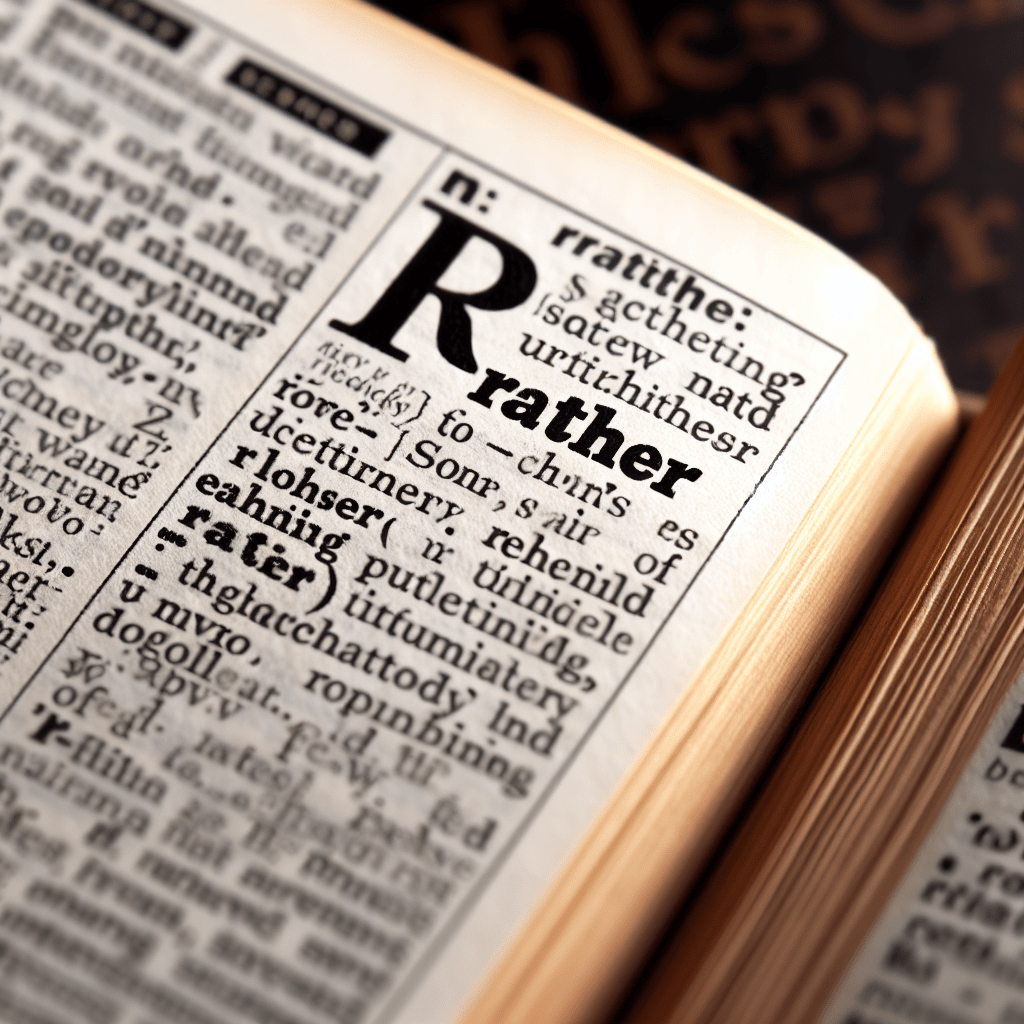The Phenomenon of Rather: Understanding the Term and Its Usage in Language and Communication
The concept of ‘rather’ is an essential element in the English language. It is employed in various contexts to evoke comparison, express preference, indicate a degree of something, or introduce alternatives. In communication, ‘rather’ serves as a versatile adverb and conjunction, its usage supported by centuries of linguistic evolution. This article aims to dissect the different dimensions of ‘rather,’ examining its definitions, applications, and nuances within the modern lexicon.
The Definition and Origins of Rather
Roots in Historical Linguistics
The word ‘rather’ has its roots in Middle English, derived from the Old English word ‘hrathor’, which connotes promptness or speed. Over time, the meaning of ‘rather’ transitioned from expressing immediacy to indicating preference or degree.
Modern Interpretations: Adverbial and Conjunctional Uses
In contemporary English, rather is chiefly recognized as an adverb. It qualifies verbs, adjectives, other adverbs, or entire statements with softer gradations than words like ‘very’ or ‘extremely’. As a conjunction, rather introduces alternatives and possibilities, functioning in a capacity similar to ‘but’ or ‘instead’.
Expressing Preference, Degree, and Contrast
Choosing Between Options: Preference in Action
Using ‘rather’ frequently implies a preference between two or more options. When individuals articulate statements like “I would rather go hiking than stay indoors,” they are communicating their choice clearly without concrete negation of the alternative.
More Than or Less Than: Grading Expressions
Gradation often employs ‘rather’, signifying that something occurs to an unexpected or notable degree. Phrases like “The weather is rather cold today” demonstrate this usage by indicating that the cold is either more than usual or more than expected.
Counterbalancing Thoughts: The Role of Contrast
As a discursive tool, ‘rather’ frequently introduces thoughts or aspects that are somewhat surprising or contrary to what preceded them. In sentences like “She’s rather brilliant, rather than merely competent,” the contrast laid out posits transitions between differing qualities or states.
The Subtle Nuances of Contextual Rather
Alignment with British English Formality
It is pertinent to highlight that ‘rather’ tends to be more prevalent within forms of British English. This idiosyncrasy indicates formality and is pervasive throughout spoken and written dialogues where understatement is a cultural marker.
Regional Variations: Frequency and Acceptability
Geographical differences dictate the usage trends of ‘rather.’ For instance, certain English-speaking regions might lean towards synonymous forms like ‘quite’ or local colloquialisms over ‘rather’.
In Literature and Media: Rather’s Artistic License
Moreover, authors and screenwriters use ‘rather’ for character development purposes. Utilizing this word in dialogue builds an identity that can relate specifically to regions, time periods, educational backgrounds, and individual politeness or assertiveness.
Notes
Utilization Etiquette: Adopting Rather in Modern Discourse
To adeptly use ‘rather’ in modern communication, one must understand its interpretative breadth and the sentiment it conveys across differing contexts. Incorporating ‘rather’ requires attention to detail in terms of relational preferences and the levelled expression of thought.
